Two research scientists at the Goh Lab are testing nanomaterials that they hope will boost both the energy capture and longevity of solar panels.
Reece Lawrence and Mark Croxall applied coating formulations to solar arrays on campus in September 2023, ascending to top of the Exam Centre on 255 McCaul Street to clean and treat the panels on its roof.
“Our inspiration came from original research within the Goh lab,” explained Lawrence. “Mark and I have always had a passion for the environment and renewable energy, so we started looking for ways to use our nanomaterials as a means of cleaning contaminants in water (such as pharmaceuticals, industrial chemicals, etc.) Instead, we ultimately found that one of the most promising applications for our material research was in solar self-cleaning surfaces.”
The solar panel coating utilized in the experiment contains nanoparticles which give it anti-reflective and self-cleaning properties. This provides a two-fold advantage for solar panels. First, reducing the amount of reflected sunshine allows more light capture, increasing energy production. Meanwhile, photocatalytic nanomaterials passively clean the surface of the panels. This allows less fouling over time, reduces the amount of cleaning required and reduces loss of energy production in between cleanings.
“We use titanium oxide (TiO2) as our photocatalytic component, the element with self-cleaning properties. TiO2 can break down organics like grease and biological matter as well as change the surface charge of the coating surface to hopefully repel dust and other debris.”
After cleaning all the panels on the roof and setting aside a control group, the coatings were sprayed onto the arrays with a simple backpack sprayer.
Croxall completed all his degrees in chemistry at UofT, doing both Master's and PhD research in the Goh Lab. Lawrence completed undergraduate and Master’s work at the University of Waterloo in Mechanical Engineering, before completing a PhD in Materials Science and Engineering at UofT.
Lawrence noted that extensive collaboration was required to launch the trial, including cooperation from the university's Facilities Department—who provided access to the panels--and the financial support of a UofT Climate Positive Energy grant.
He said Professor Goh’s cross-appointment with the Department of Materials Science and Engineering was also crucial asset in making the solar panel project possible. “It highlights the need for collaboration across multiple departments to solve challenging scientific problems.”
Seven months into the experiment, the initial results of the collaboration are promising. "Since the start of the trial we have observed approximate gains of +13% total energy generation on sunny days, or 7% increased energy generation overall. We expect this number to grow as the panels continue to experience fouling, especially when the sun gets stronger heading into the summer months.
“We are excited with these preliminary results,” Lawrence said, “and the potential to apply our research to solving real world problems.”


